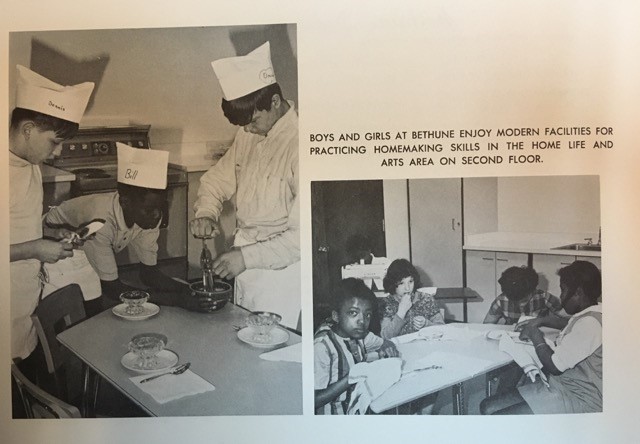
In doing research on the articles about lost Northside schools, I realized that there are three schools, two past and one current, that have a connection of sorts. They all were named for people with connections to the Civil War and slavery, in one way or another. The schools also all stood within less than a mile radius. Sumner and Grant schools are both gone, but Bethune School is still a thriving institution.
Sumner School was built in 1876, just 11 years after the end of the Civil War, and was named for Charles Sumner (1811-1874) who was best known as being a staunch abolitionist and champion of equal civil and voting rights for freed slaves. He was also an American statesman, orator and U.S. Senator from Massachusetts, and during the Civil War he was the most vigorous advocate of emancipation, of enlisting Blacks in the Union Army, and of the establishment of the Freedmen’s Bureau. The school stood along 6th Ave. N (now Olson Highway) between Aldrich and Bryant Aves. N. The school closed in 1941 and the site was sold in 1946.
Grant School was built in 1889, 24 years after the end of the Civil War, and was named after Ulysses S. Grant (1822-1885), Civil War general and United States president. While most people know that he was a general and president, they may not know (or not remember) that he supported civil rights for former slaves. He worked for the ratification of the Fifteenth Amendment to the U.S. Constitution that guaranteed that the right to vote could not be denied based on “race, color, or previous condition of servitude.” He also went to Capitol Hill to win passage of the Ku Klux Klan Act of 1871, to protect the constitutional rights guaranteed to Blacks by the Fourteenth and Fifteenth Amendments. In 1968 Grant School was renamed Bethune School and closed a year later.
A new Bethune School opened in 1969 at 919 Emerson Ave N. The school was named for Mary McLeod Bethune, important Black educator, civil and women’s rights leader, government official as an advisor to President Franklin Delano Roosevelt, and appointed by President Harry S. Truman, was the only woman of color at the founding conference of the United Nations in 1945.
Bethune was born in 1875 to formerly enslaved parents Samuel and Patsy McLeod. After the Civil War, her mother worked for her former owner until she could buy the land on which the family grew cotton. Mary McLeod benefited from efforts to educate African Americans after the war, and graduated from the Scotia Seminary boarding school in North Carolina in 1894. She would open the Daytona Beach Literary and Industrial School for Training Negro Girls. The school eventually became a college, merging with the all-male Cookman Institute to form Bethune-Cookman College in 1929. She was married to Albertus Bethune and they had a son Albert. She passed away in 1955.
The new Bethune School was only a few blocks from the former Grant School. In moving from the old building to the new one, there was a “Shopping-bag Parade” as students carried their school supplies to the new school. A former co-worker of mine told me that he remembered carrying his desk chair from the old Grant School to the new Bethune School. The school would be a unique complex with the new Phyllis Wheatley Community Center attached to it, and would be adjacent to the new Grant Park (now Bethune Park). Mary McLeod Bethune School was formally dedicated on May 3, 1969. Amongst the many honored guests at the dedication was Albert M. Bethune, Mary McLeod Bethune’s son.


